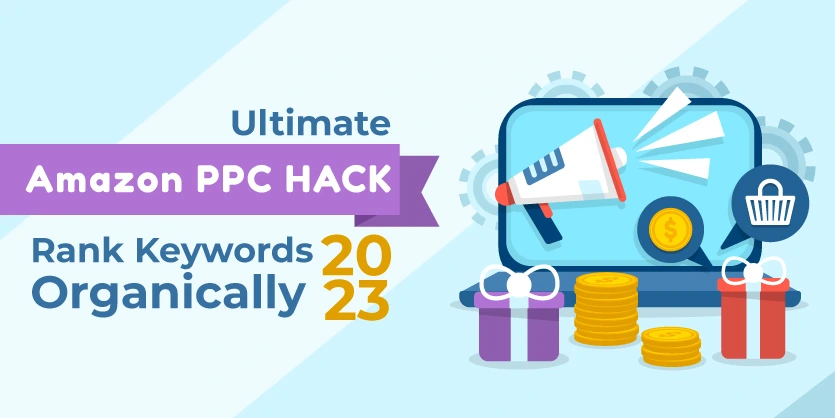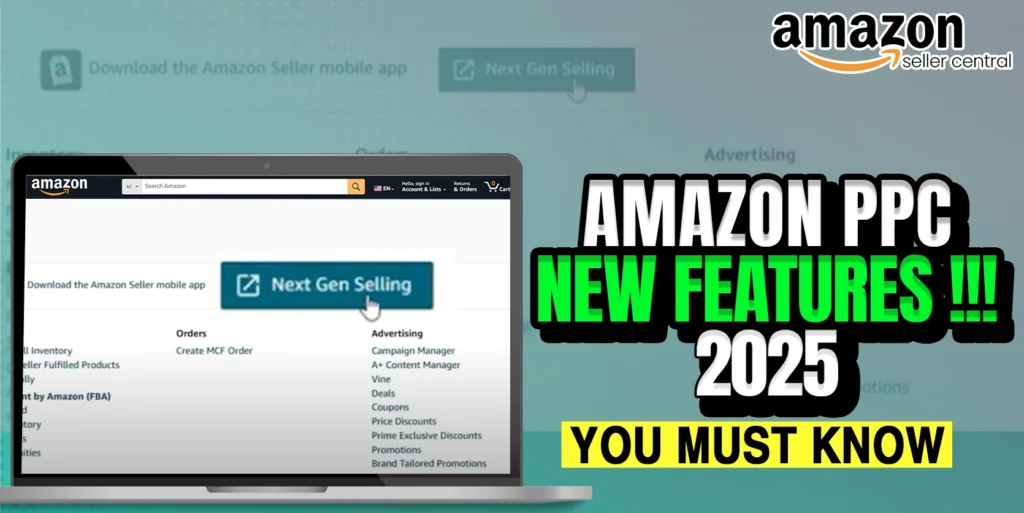Every business owner wants to have their products appear at the top of Amazon search results on an organic basis. On Amazon, “organic ranking” describes a product’s position in search results without any paid advertising or marketing. It benefits vendors by increasing the visibility, credibility, and sales of their products, making it a worthwhile objective for sellers. Your product will be more visible to potential buyers if you achieve organic ranking, which raises its position in search results. It doesn’t cost any money to advertise, making it an efficient method of promoting your product on Amazon.
You already know that all Amazon sellers aspire for an organic product ranking on the site. We often get customers come to us and say hey! I want to rank my products on Amazon and tried so many things but ended up with high spending. We carefully assess their accounts and products and share our approaches. In today’s contribution, we’ll talk about the method we used to help one of our customers’ Amazon products get the highest possible organic ranking along with the result that we were able to achieve.
Table of Contents
- What is Organic Rank?
- How to Improve Organic Rank on Amazon?
- Amazon Case Study
- Insights
What is Organic Rank?
Organic ranking on Amazon is when a customer searches for a specific product or keyword on Amazon, the search algorithm analyzes various factors to determine the most relevant and high-quality product listings to display your ad is shown on the top of the Amazon search page by any keywords without doing PPC or paid promotions called organic ranking. These factors may include the product’s title, description, keywords, sales performance, customer reviews, and other elements that indicate the listing’s overall quality and relevance to the search query.
How to Improve Organic Rank on Amazon?
- Content Optimization
As we know, content optimization is essential for Amazon listings because it directly affects the visibility, discoverability, and overall performance of products on the platform. The probability that your product will rank higher in Amazon’s search results is increased by optimized content. By strategically incorporating relevant keywords, and optimizing titles, bullet points, Enhanced Brand Content/A+ Content, Reviews and Ratings, and product descriptions, you can improve your product’s search ranking and attract more potential customers.
- Use an Effective Keyword Research Tool
An effective keyword research tool is a valuable resource for Amazon sellers looking to optimize their product listings. Using these tools the sellers identify the most relevant and high-performing keywords that customers use when searching for products on Amazon. You may greatly increase your product’s visibility, organic ranking, and overall performance on the site by strategically including these keywords in your listing.
There are a few tools that you can use, including Helium10, and Jungle Scout.
- Include only Relevant Keywords
When you search on Amazon, sometimes keyword software occasionally returns results for unrelated keywords that may have had a few random hits on Amazon with your search term. Don’t waste your time with these keywords. Remember, Amazon’s A10 algorithm values customer experience, so it will avoid leading customers on a wild goose chase. Additionally, you may also find that your research tool returns keywords like best or greatest. The A10 algorithm generally ignores superlatives, so you’ll want to refrain from using them.
- Be Conscious of Your Keyword Placement
The second most important component in getting indexed and growing your organic rank is keyword placement, which comes just after keyword relevance. We’ve discovered that the following keyword placements increase the likelihood of indexing: Title, Back-End Search Terms, Bullet Points (Features), and finally, Description.
Based on this order, you’ll want to include your highest-ranking and most relevant keywords in the title and the backend search terms.
Helpful Hint: When you have content that is A+, the graphic on your product detail page will take the place of the description on the front end. The back end won’t be impacted, though. The back end still indexes like keywords, therefore it’s smart to add a description even if it won’t be seen on the front end.
- Include Both Broad and Narrow Keyword Phrases
There are two types of keywords: broad and narrow. Broad is also defined as “short-tail” while narrow is known as “long-tail.” Notice in the funnel below how the terms go from a general short-tail keyword to a specific long-tail keyword.
Normally, you’ll want to include more long-tail phrases. However, that’s not always feasible because sometimes it can make your content look unprofessional or sloppy.
For example, “nonstick deep frying pan for kitchen” is a high-ranking long-tail keyword, but it’s difficult to put it in your content without it sounding awkward. Instead, break it down into multiple short-tail keywords like frying pan, nonstick pan, deep frying pan.
- Add Backend Search Terms
You need to add some very good generic-type keywords in the item backend. It helps to improve keyword organic rank easily.
Amazon Case Study
Here is the product listing launched around early February 2023 under the “Home & Kitchen” category. Our goal was to rank this product organically for maximum keywords and get BSR below #20.
Let me share the strategies that we had taken to hit the goal.
- Content Optimization.
We did in-depth research on the product first and top competitors’ listings as well in that category. We came up with multiple suggestions to improve the content. For example:
- Well-optimized product title with good keywords.
- Multiple images with white backgrounds.
- Well-optimized bullet points that describe the product briefly.
- And premium A+ content also.
- Research keywords
After optimizing the content fully we started researching keywords for advertisement. We used keyword research tools Helium 10 and Jungle Scout for this. We picked the top 30 keywords that have good search volume with high relevance to our products. Then we created an exact match type sponsored product campaign with those keywords and started optimizing it.
- Track keywords performance
We prepared a sheet where we began monitoring the effectiveness of our keywords’ performance twice a week. Gradually we started getting both sponsored and organic ranks for the targeted keywords. We started analyzing that data and optimizing the advertising according to the result. For example, when we noticed any keyword that got an organic rank on the first page on Amazon, we simply reduced sponsored bids for that keyword and minimized the advertising spend. On the other hand, we pushed more for those keywords in PPC that couldn’t get organic rank yet. This way we were updating the sheet and optimizing the PPC optimization on the outcome.
Okay, now let’s talk about our achievements.
Phase 01
- We started getting sales from the first week with around 48% ACoS.
- We got an average of 35% impression share in the first week.
- Our CTR was up to 0.82% at the beginning.
- Started getting organic rank for keywords.
- Got the “No.01 New Release” Badge under the “Chef’s Pans” category.
- Run Amazon Vine Program for getting reviews.
Phase 02
- Reduced 50% ACoS in 30 days.
- Increased CTR to more than 1.8% in 30 days.
- Reduced CPC from $0.89 to below $0.50
- Improved ROAS from 2 to above 4.
- Most importantly we hit the BSR below #20 within 1 month and now it’s below #15.
For your information, we achieved all of these successes within 2 months of launching the product.
Insights
In addition to this, we also have so many success stories with our clients. If you want to hear those please let us know in the comment section. The Amazon search rankings are the holy grail for marketplace sellers. You may increase sales by ranking for relevant, popular keywords with low marketing and advertising costs. As a result, you’ll have higher profit margins and more money to reinvest in your business.
Hope you have a clear idea of how to rank keywords organically. If you have any confusion or questions about this content please let us know in the comment section. We are ready to help you with those.
To learn more about How to Rank Keywords Organically, you can email us your queries through this email: info@ecomclips.com



